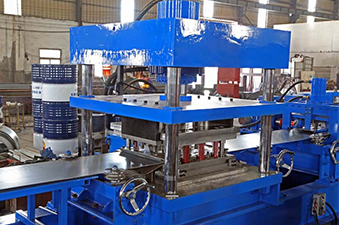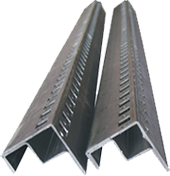Debugging Manual and Debugging Method of Cold Forming Machine
The debugging of cold forming machine needs some work experience. Only by slowly summarizing the work and using more brains can the equipment be debugged well. Especially when facing the debugging of complex cross-section products, the long-term experience is needed. It is very important to debug the method of cold forming machine well. Only by a calm response, not being anxious, and using more brains, can we cultivate an excellent debugging master of cold forming machine. In order to make it easier for you to master the debugging method of cold forming machine, the following introduces some debugging methods of it which are often encountered in daily work. The following method is suitable for roll design because it takes a long time or unfamiliar reasons for debugging disorder and re-debugging back to normal. However, some unreasonable roll design problems need to be revised. The unreasonable roll design is very difficult to debug. Therefore, if it is a roll problem, we should contact the manufacturer to modify the roll.
In the daily use of cold forming machine, the common problems encountered are distortion, edge wave, kink and so on. Such a problem, generally, is that the force on each point of the roll is not balanced, and the roll deviates from the right to the left in a straight line. Therefore, when we debug the cold bending machine, we should grasp a central point to consider the problem, that is, the rolls must be in a straight line, the upper and lower clearances of each group of rolls should be consistent, so when the Cold Forming Machine has problems, we should focus on this central idea to debug.
1. The method of keeping all rolls in a straight line.
Firstly, the center points of the first group and the last group are determined, and the center points of the two groups of rolls are moved to the center around. Then, according to these two points, draw a straight line. The center mark can be painted with chalk, then the center point is marked with the center caliper. The center point is marked in the same way for all rolling down on the machine, and then the center point of the roll is adjusted to the straight line from left to right. After the bottom roll is straightened, the topping roll is installed.
2. The method of adjusting the gap between bottom and topping rolls.
We should prepare a small section of raw materials for production, the thickness of which is the same as that of the usual materials, together with a small mirror and a flashlight. Place the material between the upper and lower rolls, and then tighten the left and right screw equally at the same time. Be careful not to tighten one side first and then the other side, which may lead to discrepancies between the two sides. After tightening, use the mirror to look at one side to see if the gap inside is just in line, and at the same time, use the torch to shine on the other side. If the gap is not uniform, the light transmission will be uneven. After confirming that the clearance is even, it is advisable to loosen it slightly and take out the material just put in. At this time, lock the left and right screw. In turn, adjust all the gaps in the same way.
After mastering the above core methods, we should flexibly use different methods for different problems. Sometimes when some problems arise, we can't always pull the straight line again in the above way, which will be time-consuming and laborious. When there is a slight problem, we can check the passing material one by one, so that we can know which group of problems began to occur, and we can roughly see which group is not in a straight line when the material had just entered the roll. Or check the clearance in groups directly using method. When twisting or edge waves occur, it may be that the left and right pressures of a group or some groups are inconsistent or not in a straight line. When longitudinal bending occurs, it may be that some groups of pressures are too tight. We can use different debugging methods according to different situations to solve, and slowly sum up, after a period of time, you will be able to handle it satisfactorily.





